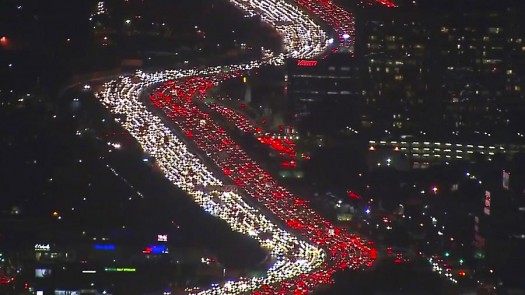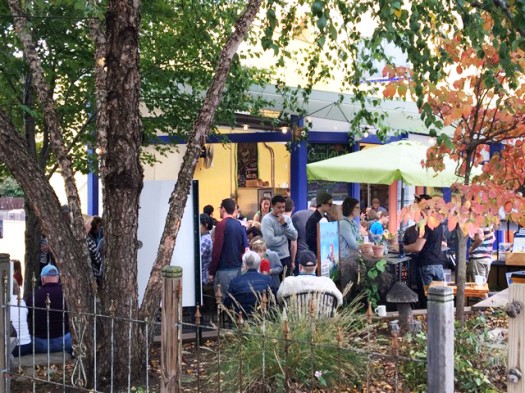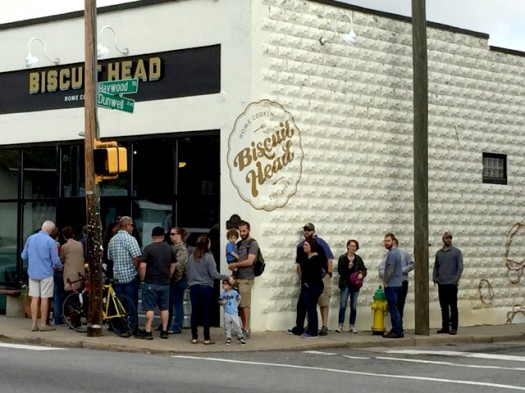A Placemaking Journal
Step Away from the Vehicle (And take back the journey)
Leading into the Thanksgiving weekend, a video of holiday traffic on Los Angeles’ 405 Freeway hit the Twitterverse.
Kinda hypnotizing, but probably not as fun to experience if you were in one of the cars “stuck in traffic.” (Smart Growth transportation planners couldn’t resist tweeting one of their favorite jabs: “If you find yourself in this situation, you’re not “stuck in traffic.” You ARE the traffic.”)

Most of us have been the traffic at one time or another, crawling along in a slow-moving line, ruing the route we chose and cursing the billboard that creeps into view: “If you lived here, you’d be home now.”
Annoying, that sign. Still, unarguable. And obvious enough to inspire — when we’re less bent out of shape at the inconvenience we’ve imposed on ourselves — recognition of the larger truth:
The more you shorten the distance between where you’re going and where you’re at, the less the hassle of getting there. And being there. When you make the commute really short, as in walkable, journey and destination do that merging thing that’s full of all sorts of unexpected bonuses.
Here’s what made me think of that recently. Take a look at these two photos of waiting lines outside two popular restaurants in my West Asheville neighborhood.


Both restaurants are successful local operations, frequented by locals and tourists alike. And both have waiting lines at popular dining hours, especially during weekend brunch times. Neither have parking lots. So those who come from outside the neighborhood often end up parking blocks away and hiking to the restaurants to get in line.
Those of us who live close by know exactly the right off-hours when the lines are short or non-existent. We try to share our wisdom with visitors, but they don’t much care. They know all about the wait. Bring it on, they say.
So let’s compare and contrast:
Out there in the freeway que, road rage candidates encased in their cars and hissing at others who’ve put their cars in the way. Here, on foot, in lines wrapping around the block at Biscuit Head and overflowing the outside waiting area at Sunny Point, maybe some of the same folks absent their encasements are totally okay with the waiting. Jabbering with one another and seemingly not in much of a hurry to move to the sitting down stage of a morning they’ve devoted to hanging out with other humans.
We know what’s going on here, right? We’re social animals. Walkability’s gifts to mental and physical health are accessible only when we encounter one another in the flesh. In pedestrian-friendly environments, others amenitize space. On the highway, they encumber it. We intuit the difference just by walking the sidewalk in a lively downtown. But an increasing body of research backs up our inferences.
My PlaceMakers colleague, Hazel Borys, has written in this space about how the pursuit of happiness and health gets a boost in the right urban environments. And mainstream journalism, as in this February piece in the Washington Post, is increasingly cataloging the damage to our wellbeing by overreliance on automobiles and long commutes.
Plan a place right, and if you’re lucky, you’ll get walk-to pleasures like Sunny Point and Biscuit Head. The exercise will make you feel better about the biscuits. The pleasures of waiting in line are available at no extra cost.
–Ben Brown
If PlaceShakers is our soapbox, our Facebook page is where we step down, grab a drink and enjoy a little conversation. Looking for a heads-up on the latest community-building news and perspective from around the web? Click through and “Like” us and we’ll keep you in the loop.






